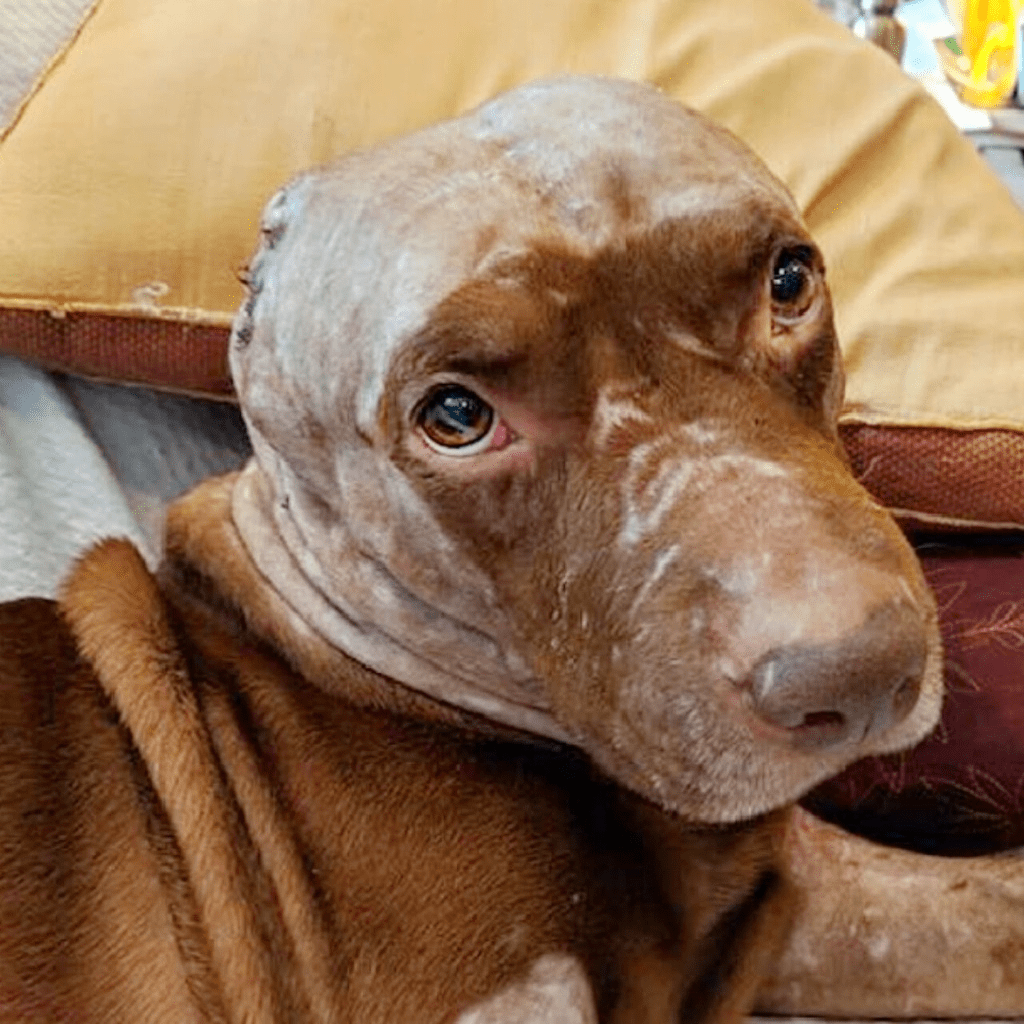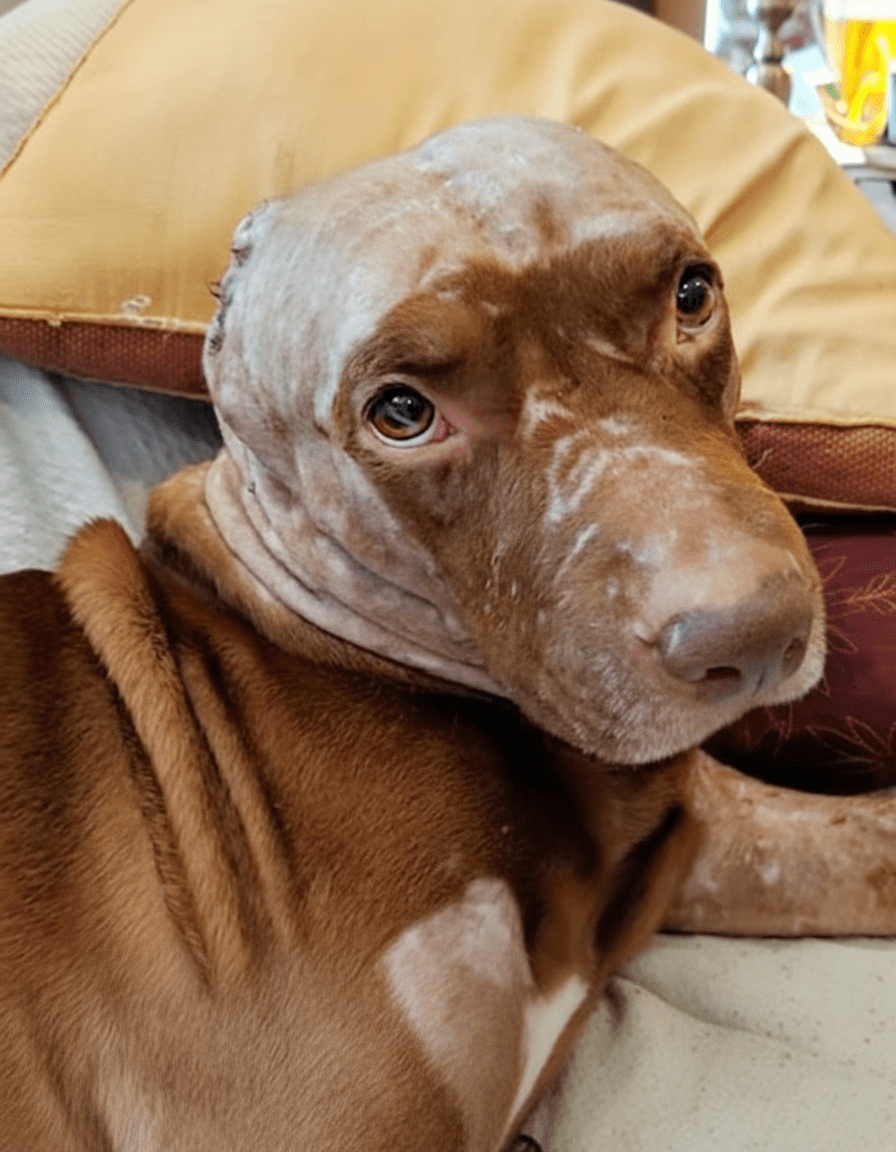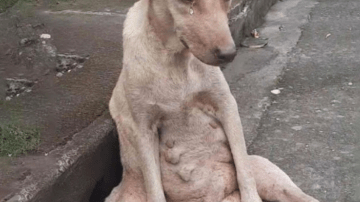The morning started like any other for animal control officer Sarah Jenkins, but it quickly took a turn she would never forget. A frantic call reported a severely injured dog found abandoned in a desolate alleyway, a victim of what appeared to be a horrific, premeditated attack.

Upon arrival, the scene was grim. A young, reddish-brown dog lay motionless, his head brutally scalped, exposing raw flesh and bone. His body was a tapestry of deep lacerations and contusions, suggesting he had endured prolonged torture. “He was barely clinging to life,” Sarah recounted, her voice still laced with the memory of that day. “It was the worst case of animal cruelty I had ever witnessed. Most would have given up, but something in his eyes, even then, told me he had a fight left in him.” They rushed the dog, later named Legend, to the emergency veterinary clinic, where the prognosis was bleak. The veterinary team, led by Dr. Anya Sharma, worked tirelessly, battling infection and immense trauma. His injuries were so extensive that euthanasia was seriously considered as the most humane option. Yet, against all odds, Legend showed a flicker of life, a subtle twitch of his tail when Dr. Sharma gently stroked his remaining fur. It was a sign, a tiny spark in the overwhelming darkness, that gave them hope.

The first few weeks were a relentless battle for survival. Legend underwent multiple surgeries to address his severe head trauma and other injuries. The scalp wounds were so extensive that traditional closure was impossible, requiring innovative skin grafting techniques. His ears, too, were severely damaged, leading to partial amputation to prevent further infection and pain. Every day brought new challenges – fevers, secondary infections, and the ever-present threat of organ failure. The veterinary staff, along with dedicated volunteers, became Legend’s round-the-clock caregivers, administering medication, changing dressings, and offering him the gentle comfort he desperately needed. Despite the agony, Legend displayed an astonishing resilience. He never growled, never bit, only offered soft licks and soulful gazes, as if silently thanking his rescuers for their unwavering efforts. It was during this critical period that he earned his name, “Legend,” for his legendary fight to live.

As news of Legend’s harrowing story spread through local media and social media platforms, an outpouring of support began. Donations flooded in, covering the exorbitant medical bills that quickly accumulated. People from all walks of life offered their time, blankets, special food, and heartfelt messages of encouragement. A local animal welfare organization, “Hope for Paws,” stepped in to manage the overwhelming public response and coordinate Legend’s ongoing care, recognizing the profound impact his story was having. His journey touched hearts far beyond the city limits, becoming a symbol of hope against cruelty and the power of compassion. The support was a testament not only to Legend’s spirit but to humanity’s capacity for kindness in the face of immense suffering.

Months turned into a year, and Legend’s physical transformation was nothing short of miraculous. His head, once a raw landscape of wounds, was now covered in surprisingly smooth, albeit hairless, skin. His once sunken eyes sparkled with vitality, and he had regained a healthy weight. He moved with a newfound confidence, his tail wagging often, a stark contrast to the trembling, broken creature he once was. Yet, the psychological scars ran deeper. Loud noises still made him flinch, and he remained wary of sudden movements. His caregivers understood that while his body had healed, his mind needed time and patient reassurance. He began a specialized rehabilitation program, incorporating gentle play, positive reinforcement training, and quiet, consistent human interaction to rebuild his trust. His progress, though slow, was steady and deeply moving to witness.






